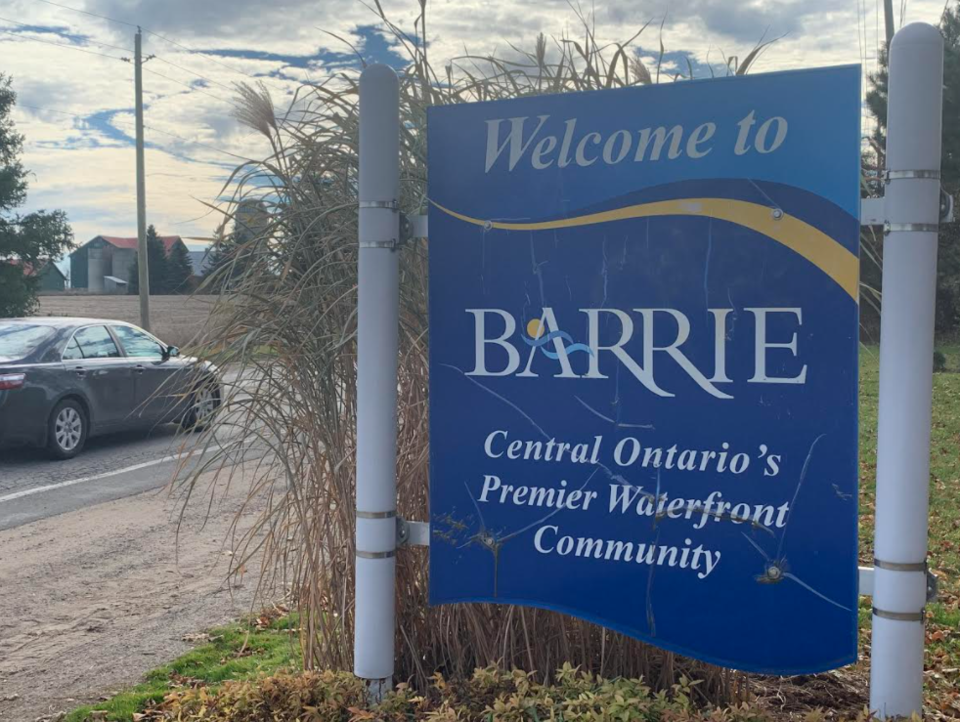The City of Barrie has posted a draft of its new Official Plan (OP) mapping out growth to the year 2041, with the objective of becoming “more vibrant, more connected, more prosperous, more culturally rich, more green and more resilient” – and more populous.
Barrie, which had an official population of 148,000 in 2018, is predicted to reach 253,000 people by 2041, transforming it into a “medium-sized city.”
The draft OP acknowledges that “historic growth patterns, characterized by relatively low densities, homogenous residential subdivisions separated by wide transportation corridors and segregated land uses” are neither sustainable nor “an appropriate use of the city’s finite land supply.”
The plan identifies strategic growth centres that will be the focus for intensification and mixed-use development; two major transit station areas, surrounding the existing GO stations in Allandale and south Barrie, where high densities will be encouraged; and plans for the redevelopment and intensification of the downtown core.
The OP concludes that all of the projected growth can be accommodated within the current Settlement Area Boundary.
However, it only leaves two small parcels of the former ‘Moratorium Lands’ – land annexed from neighbouring Innisfil – to accommodate growth beyond the 2041 planning horizon.
According to the 2020 update to the Growth Plan, Barrie is expected to add another 45,000 people and 21,000 jobs between 2041 and 2051 – bringing its population to just under 300,000.
The Barrie OP was discussed in the Jan. 13 meeting of Innisfil Council. A report from Manager of Land Use Planning Mary Nordstrom suggested that “growth targets proposed in the city's draft new Official Plan are not sufficient to accommodate growth beyond 2041 within the city’s existing boundary.”
While noting that Innisfil staff are supportive of the City of Barrie’s stated objectives, to become greener, more connected and more vibrant, and will work collaboratively with the city to develop employment opportunities and protect natural features, the report identified concerns over growth management.
In comments being sent to the city, Innisfil calls on Barrie to extend planning to the 2051 horizon, as required by the provincial Growth Plan, and develop land budgeting that will preserve the current municipal boundaries by increasing density and intensification targets.
“Just reading through the analysis that town staff have done… it seemed a little bit like déjà vu all over again,” said Coun. Kevin Eisses, suggesting that the draft OP set the stage for a future annexation of Innisfil lands. He quoted a comment made at the time of the 2010 annexation, that “Innisfil’s tired of being Barrie’s snack food.”
Eisses expressed a concern that “10, 15 years down the road… this type of annexation becomes relevant again.”
Nordstrom pointed out that the document under considering is only a draft.
“We are flagging our concerns,” she said, asking Barrie to increase density targets, intensification and infilling, “so that growth to 2051 can be accommodated within their existing boundaries.”
Mayor Lynn Dollin noted that current Minister of Municipal Affairs Steve Clark “has said time and time and time again that there will be no annexations unless both parties agree,” but acknowledged that things may change by the time of Barrie's next Official Plan review.
As for the current draft, “It looks designed to take the next chunk,” Dollin said – with only 418 hectares of developable land designated as Special Rural Area within the Designated Greenlands Area (DGA), for all of the growth beyond 2041.
The Town of Innisfil’s comments on the new OP talk about collaboration with Barrie on the development of active transportation and trail connections, joint transit opportunities for both Barrie and Innisfil residents, and protection of natural hydrologic features and groundwater supplies, but also call for an increase in density and intensification targets.
In particular, the town takes exception to a clause directing 50 percent of all growth to the Designated Greenlands Area, and 50 percent to the existing Barrie Urban Area (BUA) – suggesting that “up to 50 percent” be directed to the DGA, with more emphasis on intensification within the BUA.
“The Town of Innisfil is concerned that the minimum growth and density targets proposed… will require an expansion to the city’s existing municipal boundary and does not reflect the principles of sustainable and appropriate growth,” the letter states.
Coun. Donna Orsatti praised the town's response, calling it “a very positive way of addressing the red herring of the city boundary and the growth.”
Council received the report for information.
Nordstrom pointed out that the OP document under review is only a draft, and noted, “We have got our comments in early and on time."



